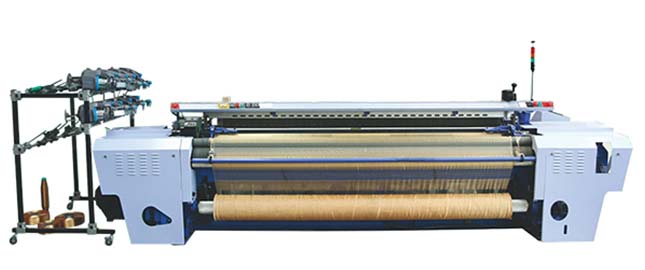Textile processing is the process of transforming raw materials into finished textile products by a series of weaving machine, knitting machine and fabric cutting machine. The methods used to process textiles vary depending on the type of fabric being produced. Common textile processing methods include weaving, knitting, dyeing, and printing.
Main Methods of Textile Production
Weaving is a textile production method that involves interlacing 2 sets of threads at right angles to create a fabric. The lengthwise threads are known as the warp, while the crosswise threads are called the weft. Most fabrics are woven on a loom, a machine that holds the warp threads in place while the weft is passed through them.
Knitting is another common textile processing method. In knitting, loops of yarn are interlocked together to create a fabric. Unlike weaving, knitting only requires one set of threads; the yarn is passed back and forth through itself to form the fabric. Knitting can be done by hand or by machine.
Dyeing is a textile processing technique that alters the color of fabrics. Fabric can be dyed before it is woven or knit, or after it has been constructed into a garment or other product. Dyeing can be done manually or using machines. Common dye stuffs used in textile dyeing include natural dyes derived from plants or animals, as well as synthetic dyes made from chemicals.
Printing is another way to alter the appearance of fabrics. In printing, patterns or images are transferred onto fabric using ink or another printable medium. Like dyeing
Advantages and Disadvantages of Textile Processing
There are several advantages and disadvantages to textile processing, which include the following:
1. Advantages
Textile processing can add value to a product by improving its appearance, strength, or other properties.It can also help to protect the fabric from damage during use or storage. Some textile processes, such as dyeing or printing, can be used to create unique designs that can make a garment more fashionable or stylish. Textile processing can also be used to repair damaged fabrics, such as those that have been ripped or torn.
2. Disadvantages
Textile processing often uses harsh chemicals that can be damaging to both the environment and human health. The processes can also be very energy intensive, which contributes to greenhouse gas emissions and climate change. Some textile treatments, such as bleaching or non-ionic wet treatments, can weaken the fabric and make it more susceptible to tearing or ripping.
Main Steps of Textile Process Flow
To spinning cotton into yarn generally goes through major processes such as cleaning, carding, drawing, roving, and spinning. Yarns and threads for high-end products also require an additional combing process.
Different processing procedures are required to produce cotton yarn with different requirements, such as spinning pure cotton yarn and polyester-cotton blended yarn. Due to the different raw materials used, the physical properties of various raw materials, and the different product quality requirements, the Different production processes are required.
1. Process Flow of Pure Cotton Yarn
Carded Yarn
Clearing → Carding → First Parallel → 2 Parallel → Roving → Spun Yarn → Post-processing;
Combed Yarn
Clearing → Carding → Pre-Drawing → Coils → Combing → Head Drawing → Double Drawing → Third Drawing → Roving → Spun Yarn → Post-Processing;
2. Process Flow of Polyester-Cotton Blended Yarn
1. Carded Yarn
Raw Cotton:
Cleaning → Carding → First Parallel → Second Parallel → 3 Parallel → Roving → Spinning → Post-Processing;
2. Combed yarn:
Raw cotton: Cleaning → Carding → Pre-Merging → Coiling → Combing → First Parallel → Second Parallel → 3 Parallel → Roving → Spinning → Post-Processing;
SUNTECH Machine for Textile Processing

ST-ERL-600
SUNTECH 600 high speed fully electronic carbon fiber rapier loom can be used for weaving different fabric types into textiles in a high running speed, which is designed in PLC control, 4 modes coexist and 8 colors selection, is for a high-efficiency production, and can be easily operated.
ST-ERL-600 has the max speed up to 600rpm and electronic dobby 16-20 shafts for electronic jacquard weaving. The automatic controlling PLC system achieves the auto-stop/start, auto weft seeking, over compensation, weft compensation, auto fault recognition and etc, is the best rapier loom for your weaving factories!




